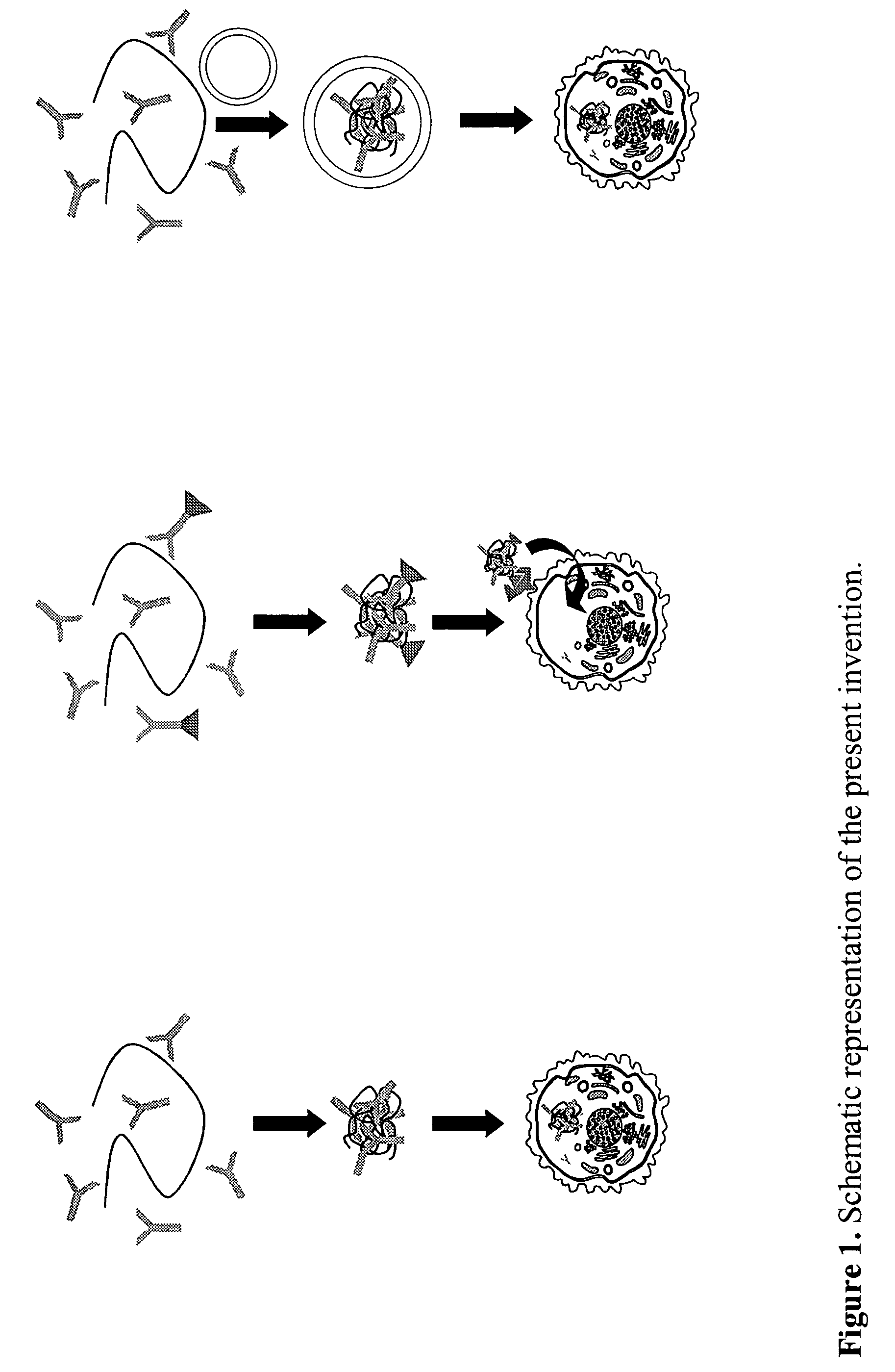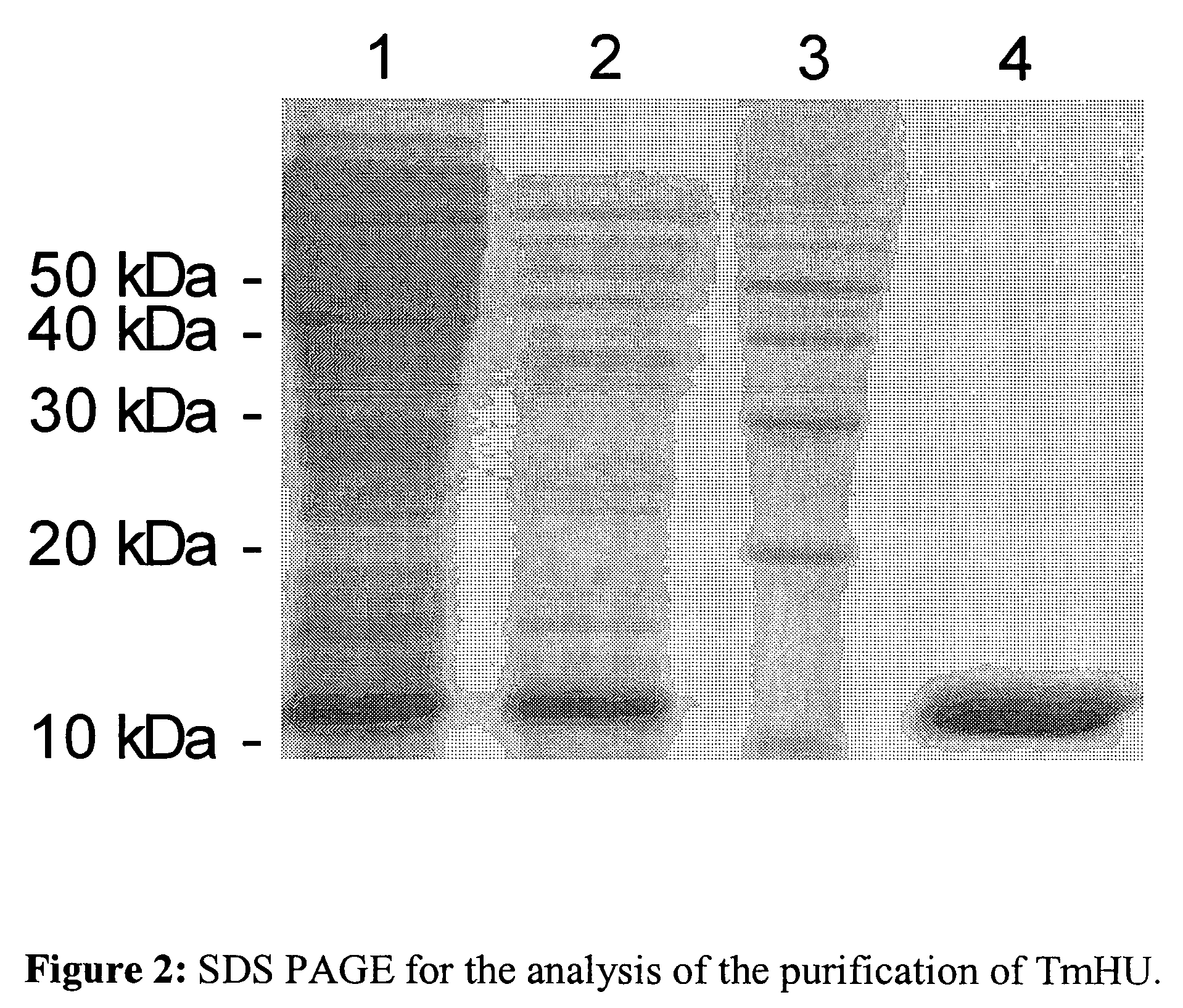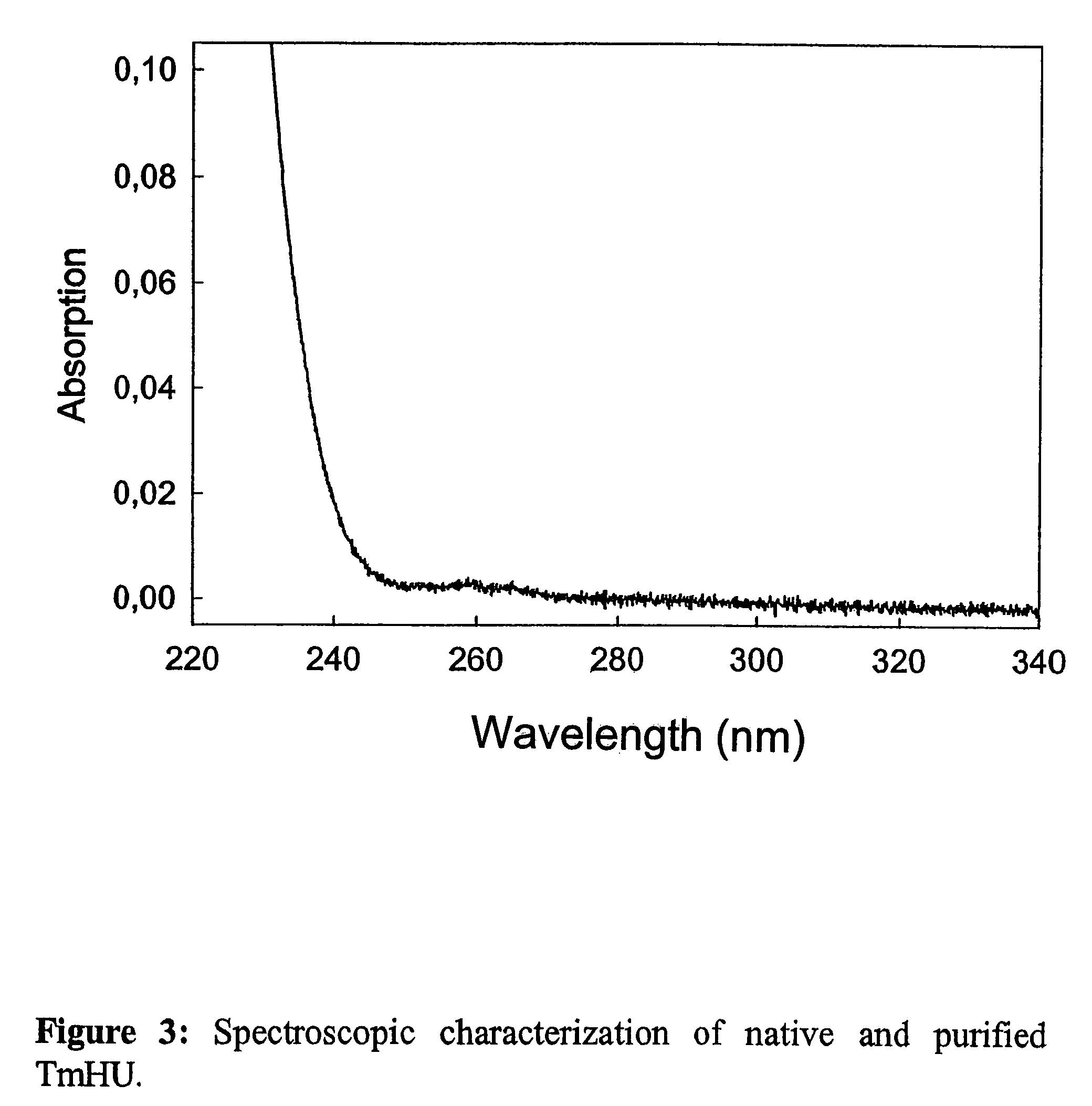Method for transfer of molecular substances with prokaryotic nucleic acid-binding proteins
a technology of prokaryotic nucleic acid and molecular substances, applied in the field of molecular substances with prokaryotic nucleic acid-binding proteins, can solve the problems of low efficiency and relatively high loss of cells, low survival rate of cells, and different and individual disadvantages of named techniques and reagents
- Summary
- Abstract
- Description
- Claims
- Application Information
AI Technical Summary
Benefits of technology
Problems solved by technology
Method used
Image
Examples
example 2
Proof of the Nucleic Acid-Binding Properties of TmHU
[0069]A 56 bp-DNA fragment as well as a 23 bp fragment are amplified with PCR-technology by 2 primers each from which one each is biotinylated, and the resulting double-stranded DNA immobilized at Streptavidin chips. By surface plasmon resonance (SPR) determined by a BIACore unit (Amersham Pharmacia Biotech), the compound of TMHU to the respective immobilized DNA can be measured directly (FIG. 4).
[0070]Thereby, TmHU in various concentrations in a buffer containing 50 mM sodium phosphate, pH 7.5 and 100 mM sodium chloride is injected into the flow cell of the DNA chips and the SPR signal is recorded. The plateaus of the signals are directly proportional to the bound quantity to TMHU. An application of the SPR signal against the concentration of the employed TmHU results in a sigmoid curve according to the Hill equation (FIG. 4), which, in the case of the 56 bp-fragment, is characteristic for a highly cooperative compound. The transi...
example 3
Protection of Nucleic Acids Against Degradation by Nucleases
[0071]1 μg of a circular plasmid DNA (pEGFP-N1, Clontech) in 120 μl sample buffer (20 mM HEPES, pH 7.2, 100 mM NaCl, 5% glycerol, 10 mM MgCl2) are mixed with TmHU, human histones (Sigma), cetyl-trimethyl-ammonium-bromide (CTAB, Amresco) or Spermidin (Sigma) in three different concentrations each, incubated for one hour at room temperature and subsequently 5 units Benzonase (Merck) were added. After 30 min. incubation at room temperature the samples are brought to concentrations of 0.5% SDS, 20 mM EDTA, the nucleic acids are extracted with phenol / chloroform and precipitated from the aqueous phase with the help of ethanol. Subsequently, after labeling the DNA with the sensitive dye SYBR Gold (Molecular Probes) on a 1% agarose gel the protection of the nucleic acids from nuclease breakdown is analyzed (FIG. 5). In this example the considerable protection of the DNA by TmHU against the degradation by nucleases becomes apparent....
example 4
Transfection of Eukaryotic Cells
[0073]300 μl of a TmHU-solution (0.5 mg / ml) and 6 μl plasmid-DNA (24 μg pCMV-β, coded for the marker protein β-galactosidase) are incubated together for one hour at room temperature. Subsequently, this mix is brought into the medium of semi-confluent murine NIH 3T3- or human 293T-cells (60 mm cell culture dish). The dishes are waved slightly and incubated for 2 days at 37° C. and 5% CO2; during this time no additional medium change is performed. Thereby, a precipitate is formed from protein and nucleic acids that sediment onto the adherent cells. The protein / nucleic acid complex is taken up by the cells during this time. After 48 hours a labeling of the transformed cells with a substrate for the β-galactosidase, 5-bromo-4-chloro-3-indolyl-β-D-galactopyranosid (X-Gal), is performed and the ratio of the labelled (transfected) to the non-labelled (non-transfected) cells is determined. From this the transfection efficiency is calculated.
[0074]To this effe...
PUM
| Property | Measurement | Unit |
|---|---|---|
| temperatures | aaaaa | aaaaa |
| wavelength range | aaaaa | aaaaa |
| molecular mass | aaaaa | aaaaa |
Abstract
Description
Claims
Application Information
 Login to View More
Login to View More - R&D
- Intellectual Property
- Life Sciences
- Materials
- Tech Scout
- Unparalleled Data Quality
- Higher Quality Content
- 60% Fewer Hallucinations
Browse by: Latest US Patents, China's latest patents, Technical Efficacy Thesaurus, Application Domain, Technology Topic, Popular Technical Reports.
© 2025 PatSnap. All rights reserved.Legal|Privacy policy|Modern Slavery Act Transparency Statement|Sitemap|About US| Contact US: help@patsnap.com



